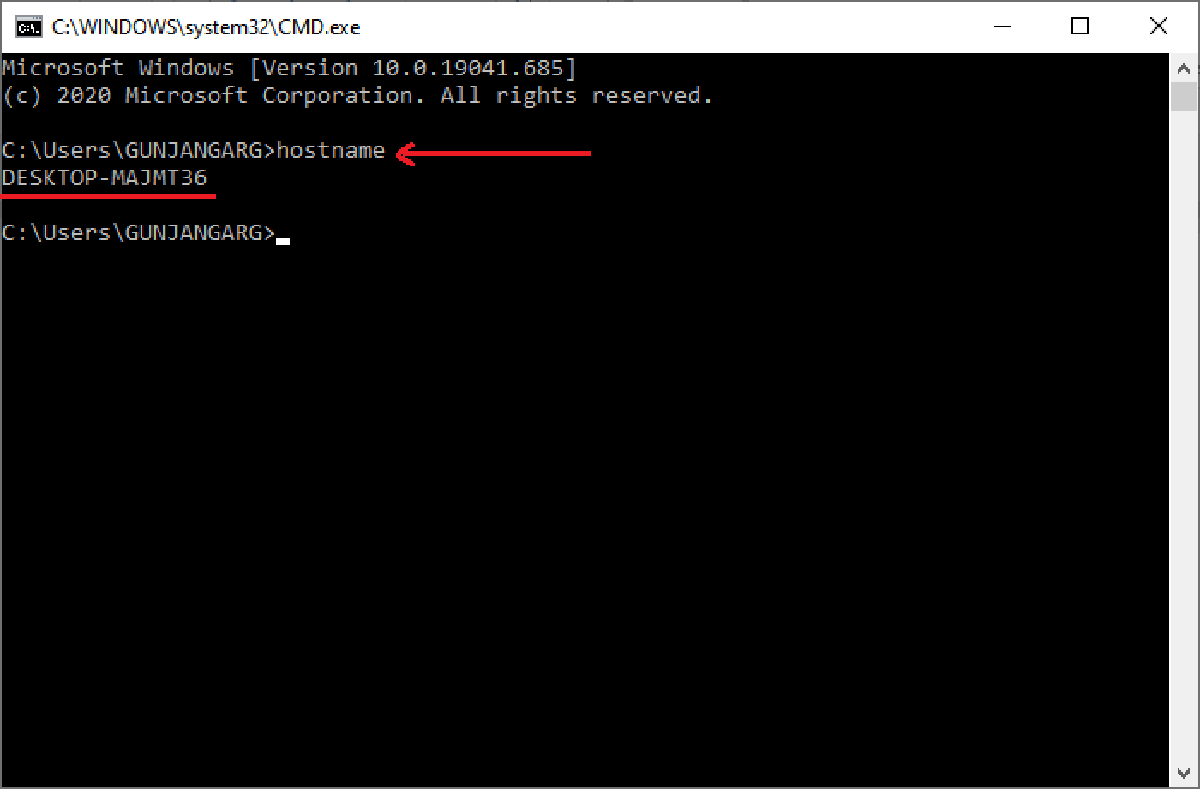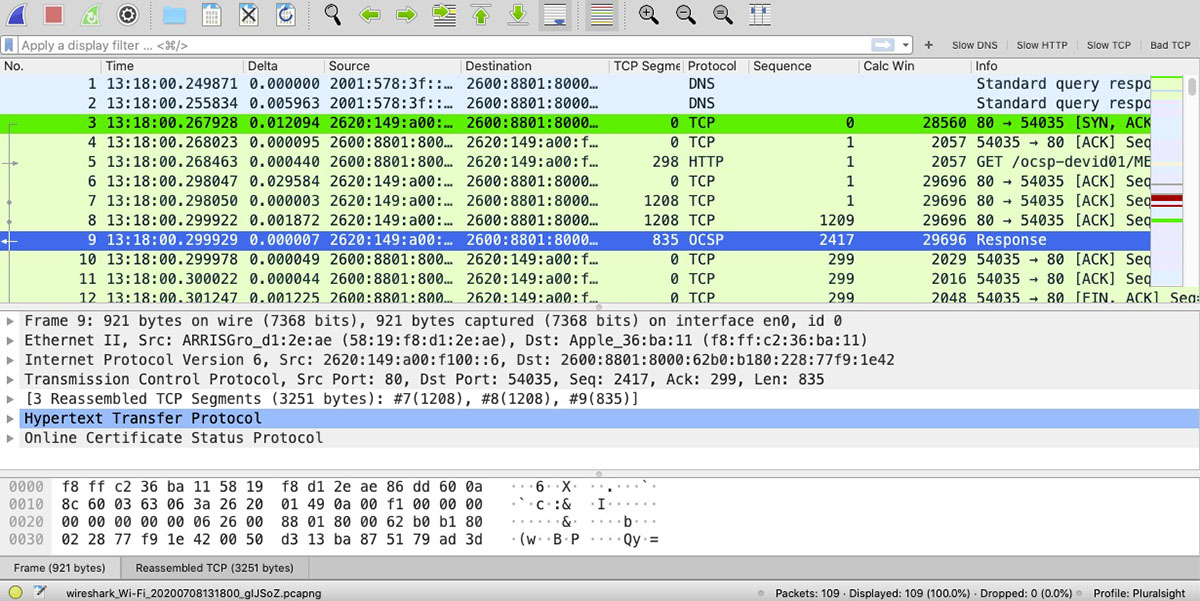Introduction
Have you ever come across an IP address and wondered what domain or website it belongs to? Well, the good news is that you can easily retrieve the hostname from an IP address. A hostname is a unique identifier that represents a device connected to a network, such as a computer or a server. It consists of a series of alphanumeric characters and is used to identify and communicate with specific devices on the internet.
Being able to obtain the hostname from an IP address can be useful in various scenarios. For example, it can help you identify the origin of malicious activities, troubleshoot network connectivity issues, or simply satisfy your curiosity regarding a particular IP address. Fortunately, there are several methods available to retrieve the hostname associated with an IP address, whether you are using a Windows, Mac, or Linux operating system.
In this article, we will explore three different methods to obtain the hostname from an IP address. We will start with the command prompt method for Windows users, followed by the terminal method for Mac and Linux users. Lastly, we will discuss how to achieve this using a programming language.
If you’ve ever struggled to find a website or server associated with an IP address, keep reading to discover how to effortlessly obtain the corresponding hostname.
What is a hostname?
A hostname is a unique label or identifier that is assigned to a device connected to a network. It is used to identify and differentiate devices from one another in a networked environment. A hostname is typically associated with a specific IP address and acts as a human-readable counterpart to the numerical IP address.
A hostname can be thought of as the “name” of a device or entity on the internet. It is composed of a series of alphanumeric characters, including letters, numbers, and hyphens. For example, “www.example.com” is a common hostname for a website, while “mail.example.com” may be the hostname for an email server.
Hostnames play a vital role in the functioning of the Domain Name System (DNS), which is responsible for translating human-readable domain names into their corresponding IP addresses. When you enter a web address into your browser, the DNS system retrieves the IP address associated with that hostname, allowing your device to establish a connection to the correct server.
It’s important to note that a hostname is not limited to just websites or servers. Any device connected to a network, whether it’s a computer, router, printer, or Internet of Things (IoT) device, can have a hostname. This allows for easier identification and communication between devices.
In addition to facilitating network communication, hostnames also enable services such as email, file transfer, remote access, and more. For example, when you send an email to someone, the email server uses the recipient’s hostname to determine where to deliver the message.
Overall, a hostname serves as a human-friendly identifier for devices connected to a network, allowing for more intuitive communication and access. Understanding the concept of hostnames is crucial in retrieving information related to IP addresses and navigating the complex world of networking.
Why would you need to get hostname from IP?
There are several scenarios where you may need to retrieve the hostname associated with an IP address. Let’s explore some common reasons why this information can be valuable:
- Network Troubleshooting: When you’re experiencing connectivity issues or suspicious network activity, knowing the hostname can help identify the source of the problem. By obtaining the hostname from an IP address involved in the issue, you can gain insights into the device or server causing the trouble and take appropriate actions to resolve it.
- Security Analysis: In the context of cybersecurity, being able to get the hostname from an IP address can aid in investigating potential threats. If you come across a suspicious IP address, retrieving its associated hostname can provide clues about the origin or intent of the activity. This information can play a crucial role in protecting your network and systems from potential attacks.
- Website Management: Website administrators often need to obtain the hostname from an IP address to manage their online presence effectively. Whether it’s to troubleshoot DNS-related issues, identify server configurations, or track visitor analytics, knowing the hostname associated with an IP address is essential for maintaining the functionality and performance of a website.
- Investigative Purposes: From a curious standpoint, you might come across an IP address and want to know more about the website or server behind it. By retrieving the hostname from the IP address, you can gather information about the entity associated with it, such as its domain name, organization, or location.
- Network Administration: Network administrators often need to manage multiple devices on a network. By obtaining the hostname from an IP address, administrators can easily identify and track devices, implement network policies, and manage resources effectively.
Overall, acquiring the hostname from an IP address can provide valuable insights for troubleshooting, security analysis, website management, investigation, and network administration purposes. It helps in identifying devices, understanding network behaviors, and taking appropriate actions to ensure a secure and well-functioning network environment.
Method 1: Using Command Prompt (Windows)
If you’re using a Windows operating system, one of the easiest ways to get the hostname from an IP address is by utilizing the Command Prompt. Follow the steps below:
- Open the Command Prompt by pressing the Windows key + R and typing “cmd” in the Run dialog box. Press Enter to launch the Command Prompt.
- In the Command Prompt window, type the command “nslookup [IP Address]” and press Enter. Replace “[IP Address]” with the actual IP address you want to retrieve the hostname for.
- The Command Prompt will display the hostname associated with the provided IP address. Look for the “Name” field in the output, which represents the hostname.
For example, if you want to get the hostname for the IP address “123.456.789.0”, you would enter the command “nslookup 123.456.789.0” in the Command Prompt.
It’s important to note that the accuracy and availability of hostname information may depend on various factors, such as the DNS configurations and the network settings. In some cases, the command may not return a hostname if it’s not associated with the provided IP address.
Using the Command Prompt provides a straightforward and quick method to retrieve the hostname from an IP address in a Windows environment. Once you have the hostname information, you can use it for further analysis, troubleshooting, or any other purposes that require knowing the associated hostname.
Method 2: Using Terminal (Mac/Linux)
If you’re using a Mac or Linux operating system, you can use the Terminal application to obtain the hostname from an IP address. Follow the steps below:
- Open the Terminal application by navigating to your Applications folder or using the keyboard shortcut (Command + Spacebar) and searching for “Terminal”.
- In the Terminal window, type the command “nslookup [IP Address]” and press Enter. Replace “[IP Address]” with the actual IP address you want to retrieve the hostname for.
- The Terminal will display the hostname associated with the provided IP address. Look for the “Name” field in the output, which represents the hostname.
For example, if you want to get the hostname for the IP address “123.456.789.0”, you would enter the command “nslookup 123.456.789.0” in the Terminal.
Similar to the Command Prompt method, the accuracy and availability of hostname information may depend on the DNS configurations and network settings. If the provided IP address is not associated with a hostname, the command may not return any result.
The Terminal application provides a convenient way to retrieve the hostname from an IP address in Mac and Linux environments. Once you have obtained the hostname, you can utilize it for various purposes, such as troubleshooting, network analysis, or simply to satisfy your curiosity regarding the IP address.
Method 3: Using Programming Language
If you prefer to automate the process of retrieving the hostname from an IP address or if you need to integrate it into your own software or script, you can utilize a programming language. Most programming languages offer libraries or built-in functions to perform DNS lookups and obtain the hostname associated with an IP address. Here is a general outline of how you can achieve this:
- Select a programming language that you are familiar with or prefer to work with. Some commonly used languages for network-related tasks include Python, Java, and C++.
- Refer to the documentation or resources for the chosen programming language to identify the library or function that facilitates DNS queries.
- Using the appropriate library or function, implement a code snippet that takes an IP address as input and retrieves the hostname.
- Execute the code and observe the output, which should provide the hostname associated with the provided IP address.
The specific implementation details may vary depending on the programming language you choose. However, the underlying concept remains the same: using the language-specific DNS lookup functionality to retrieve the hostname.
By utilizing a programming language, you can further customize the process of obtaining the hostname from an IP address. You can incorporate error handling, custom formatting, or additional logic based on your specific requirements.
Using a programming language offers flexibility and extensibility, allowing developers to integrate the hostname retrieval functionality seamlessly into their applications, scripts, or automation workflows.
Conclusion
Retrieving the hostname from an IP address can be a useful skill in various situations, whether you are troubleshooting network issues, analyzing security threats, managing websites, or simply satisfying your curiosity. Thankfully, there are multiple methods available to accomplish this task.
In this article, we explored three different methods to obtain the hostname from an IP address. We started with using the Command Prompt in Windows, where the “nslookup” command allowed us to query the DNS and retrieve the associated hostname quickly.
For Mac and Linux users, we learned how to use the Terminal application to run the same “nslookup” command and obtain the hostname from an IP address.
Lastly, we discussed the option of using a programming language to automate the process of retrieving the hostname. This method provides flexibility and customization options, making it suitable for integration into scripts, applications, or automation workflows.
Throughout the article, we emphasized the importance of hostname information in troubleshooting network problems, analyzing security threats, managing websites, and performing network administration tasks. By knowing the hostname associated with an IP address, you can gather valuable insights into the device or entity behind it, enabling you to take appropriate actions and make informed decisions.
Whether you prefer the simplicity of using the Command Prompt or Terminal, or the versatility of programming languages, the ability to retrieve the hostname from an IP address empowers you in understanding and managing the complexities of networking.
So, the next time you come across an IP address and want to know its corresponding hostname, feel confident in applying the methods discussed in this article to uncover that valuable piece of information.

























